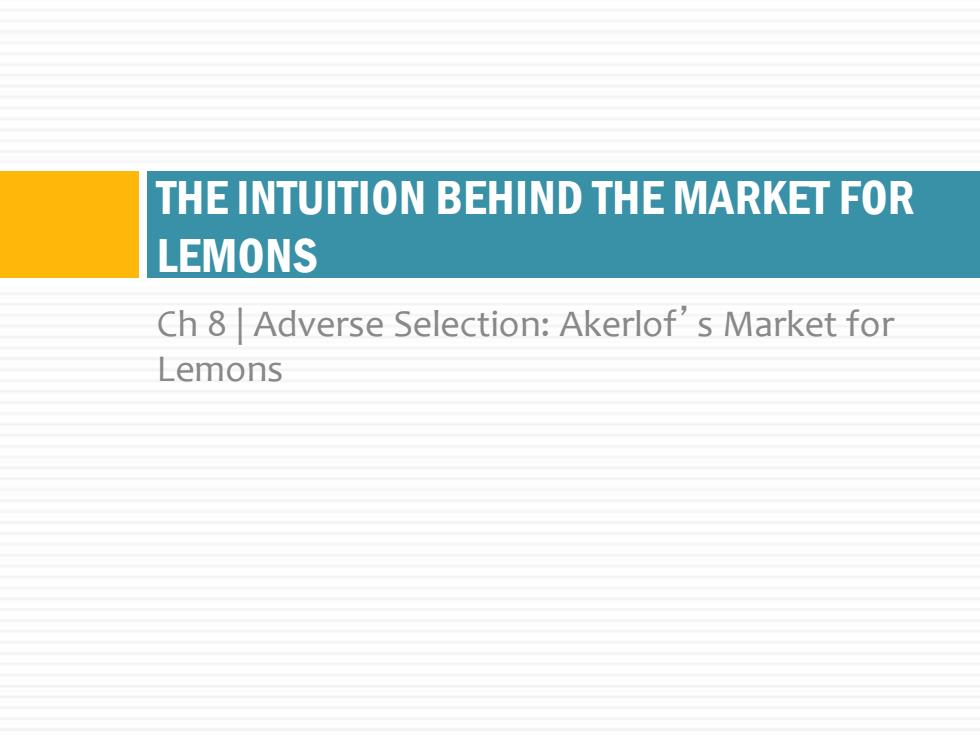
CHAPTER 8 ADVERSE SELECTION:AKERLOF S MARKET FOR LEMONS
CHAPTER 8 ADVERSE SELECTION: AKERLOF’S MARKET FOR LEMONS

Intro A man walks into the office of a life insurance company. He wants to buy a s1 million life insurance policy for a term of one day.Your company will have to pay s1 million to his heirs if and only if he dies tomorrow. You know nothing else about this man. How much do you charge? Bhattacharya,Hyde and Tu-HealthEconomics
Bhattacharya, Hyde and Tu – Health Economics Intro A man walks into the office of a life insurance company. He wants to buy a $1 million life insurance policy for a term of one day. Your company will have to pay $1 million to his heirs if and only if he dies tomorrow. You know nothing else about this man. How much do you charge?

Asymmetric information Definition:a situation in which agents in a potential economic transaction do not have the same information about the quality of the good being transacted A major theme of this course,and the source of many problems in health insurance markets Bhattacharya,Hyde and Tu-HealthEconomics
Bhattacharya, Hyde and Tu – Health Economics Asymmetric information Definition: a situation in which agents in a potential economic transaction do not have the same information about the quality of the good being transacted A major theme of this course, and the source of many problems in health insurance markets

THE INTUITION BEHIND THE MARKET FOR LEMONS Ch 8Adverse Selection:Akerlof's Market for Lemons
Ch 8 | Adverse Selection: Akerlof’s Market for Lemons THE INTUITION BEHIND THE MARKET FOR LEMONS

First:symmetric information Imagine a well-functioning used car market Sellers advertise cars,and buyers can accurately assess the condition of each car for sale Some buyers will be willing to pay more for cars in good condition;others are happy to get a deal Symmetric information:buyers and sellers have symmetric info about car quality.This is crucial. Outcome:each car sells for a different price, depending on its quality Bhattacharya,Hyde and Tu-HealthEconomics
Bhattacharya, Hyde and Tu – Health Economics First: symmetric information Imagine a well-functioning used car market Sellers advertise cars, and buyers can accurately assess the condition of each car for sale Some buyers will be willing to pay more for cars in good condition; others are happy to get a deal Symmetric information: buyers and sellers have symmetric info about car quality. This is crucial. Outcome: each car sells for a different price, depending on its quality